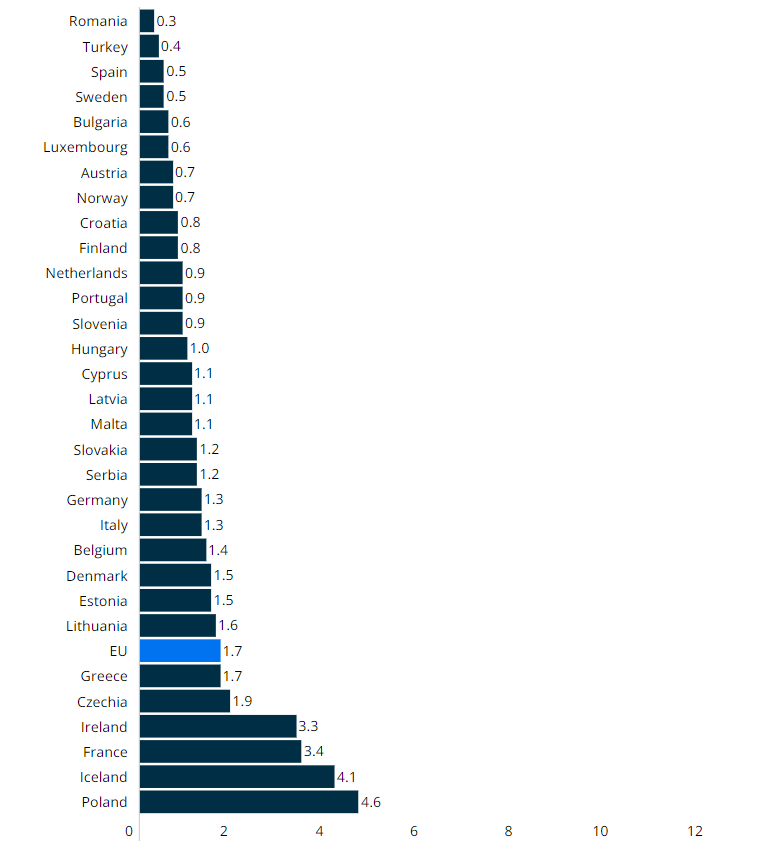European Smoking and Vaping Rates Compared – Which Countries Are Most Addicted?
The UK recently announced plans to require anti-smoking informational inserts in cigarette packs, furthering its tobacco deterrence efforts. But how exactly do European nations compare regarding smoking rates and vaping prevalence? This in-depth article examines the data.
Recent UK Measures to Discourage Smoking
The UK already mandates graphic visual health warnings and plain packaging on tobacco products. Now the government aims to take things a step further by requiring inserts on quitting smoking in all cigarette packs.
This follows other recent UK initiatives to curb smoking, including:
Tightening restrictions on illegal sales of vapes to those under 18
Launching a national “swap to stop” advertising campaign promoting switching from cigarettes to vaping
Offering pregnant women financial incentives up to £400 to quit smoking
The overarching goal is making the UK effectively “smoke-free” by 2030 by lowering smoking rates to around just 5% of the population.
Daily Smoking Rates
According to the latest Eurostat data, the overall daily smoking rate among the EU population is 19.7% on average. However, significant differences emerge when comparing country rates across Europe:
- Highest smoking rates – Bulgaria (28.2%), Turkey (27.3%), Greece (27.2%), Hungary (25.8%), Latvia (24.9%)
- Lowest smoking rates – Sweden (9.3%), Iceland (11.2%), Finland (12.5%), Norway (12.9%), Luxembourg (13.5%)
Daily percentage of smokers among persons aged 15 and over, source: Eurostat
The data shows Sweden has by far the lowest smoking prevalence following years of strict tobacco control measures. These include banning smoking in all bars, restaurants, and eventually even outdoor public spaces by 2019.
There is a clear correlation evident between countries with the most aggressive anti-smoking policies and lower daily smoking rates among the population. This demonstrates the effectiveness of targeted interventions.
Occasional vs Daily Smoking
The Eurostat statistics also break down occasional versus daily smoking rates:
- Across the EU, 12.6% of citizens smoke fewer than 20 cigarettes daily
- 5.9% of the EU population smoke 20 or more cigarettes every day
- Only 9 EU countries have double-digit percentages smoking 20+ cigarettes daily – Austria, Bulgaria, Croatia, Czechia, Germany, Greece, Hungary, Romania, and Slovenia
Again, countries with the lowest daily smoking rates tend to have the most robust public smoking restrictions, highlighting the importance of deterrence policies.
European Vaping Statistics
While vaping is often promoted as a safer alternative to smoking, its long-term health impacts remain debated as more research emerges. Eurostat data regarding vaping rates shows:
- Highest vaping rates – France (6.6%), Poland (6.0%), Netherlands (5.9%), Portugal (5.7%)
- Lowest vaping rates – Spain (1.0%), Turkey (0.9%), Sweden (1.3%), Finland (1.4%)
- More daily vapers than occasional users in Poland, Ireland, Greece, France, Portugal, Iceland
- More former vapers than current vapers in 20 EU countries
Share of people smoking electronic cigarettes or similar electronic devices (%), source: EuroStat
In contrast to smoking, no clear pattern emerges linking stricter vaping regulations to reduced usage rates. But the market is still relatively new and policies remain in flux across different countries.
Preventable Mortality Burden
According to the World Health Organization (WHO), tobacco smoking causes over 8 million deaths annually worldwide, making it the single largest preventable threat to public health globally.
While progress reducing smoking rates has been steady in recent decades, the total number of smokers across the EU remains concerning given tobacco’s indisputable health consequences:
- Over 750,000 preventable European cancer cases each year stem directly from smoking
- 50% of lifelong smokers will die prematurely from smoking-induced illnesses, losing around 14 years of life on average
- European countries with the lowest smoking rates like Sweden and Finland also have the lowest incidence of lung cancer and related mortality
This clearly demonstrates the immense disease burden imposed by tobacco, validating policy interventions aimed at curbing smoking initiation and prompting cessation.
Recommendations to Further Reduce European Smoking Rates
While many effective anti-smoking measures exist today, European countries must persist in pushing down smoking rates through sensible policy frameworks. Recommended strategies include:
- Comprehensive public vaping bans where risks of long-term aerosol exposure exist, especially around youth
- Taxation policies disincentivizing tobacco purchases through price hikes
- Advertising restrictions including point-of-sale display bans and packaging limitations
- Cessation support emphasizing counseling and reduced-harm nicotine alternatives to avoid relapses
With millions of preventable deaths attributed to smoking across Europe annually, declining yet still alarmingly high smoking rates must be addressed. Expanding access to quit-smoking resources and hard-hitting public awareness campaigns are also key components in the path toward a smoke-free European future.
More detail info: Smoking in Europe: Which countries are the most and least addicted to tobacco and vaping?
- Bestselling Vapes in UK After Disposable Ban: What to Stock 2025 - August 8, 2025
- Argentina Debates Stricter Vape Laws Amid Prohibition Failures - August 8, 2025
- Nigeria Advocacy Group Urged to Hike Tobacco & Vape Tax by 100% - August 8, 2025











